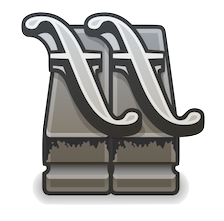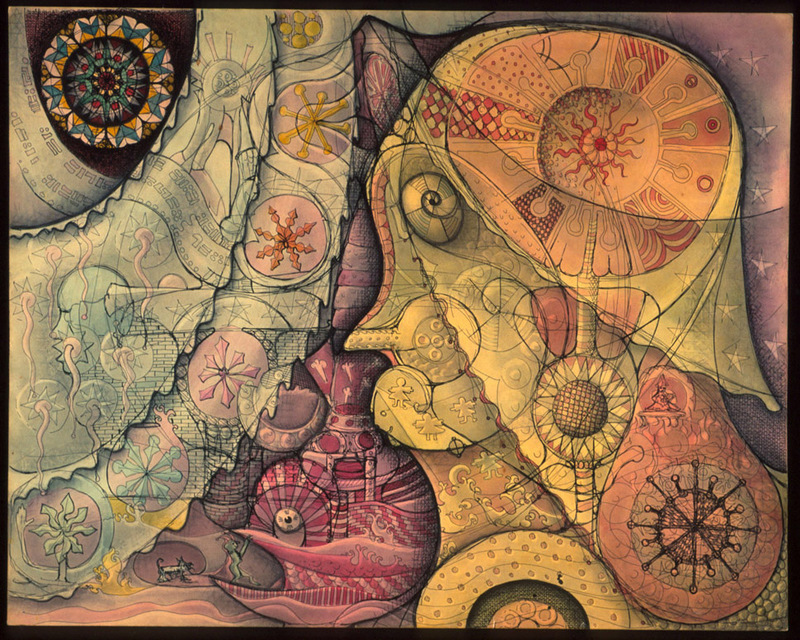| | |
Alltype
|
Abandoned old software from Atech that allows batch conversions from type 1 to truetype. Comments gleaned from the net: " Alltype is perhaps the worst possible way to do T1 -> TTF. It mangles hinting among other things. Whenever I see 'Converted by Alltype', I erase the thing immediately. Wish everyone did." Alltype Version 2.06 is available (for the incredible price of $149) at Convertafont and Pagetech. ATC (AllType Typeface Converter) is the so-called universal type conversion program from PageTech. It seems at least to be able to convert TTF to type 1, SFS (for downloading to HP PCL5e printers) and .sft. I am not sure about the converse. It costs 250USD. Note: "AllType also gives you the ability to create new variations from an original typeface. By using AllType customization options, you can generate dozens of new condensed, expanded, hollowed, obliqued, and bolded variations from a single master typeface. " PageTech also sells TTF2PFB.EXE to convert TTF to PFB. See also here. [Google]
[More] ⦿
|
em2 Solutions
|
Software company of Michael Jansson, located in Bromma, near Stockholm. Font software specialists, who have worked on an Adobe type 1 to truetype converter (as a built-in part of Windows NT, and a separate product called Janus), and are working with Microsoft on OpenType tools. [Google]
[More] ⦿
|
Font conversions by ATM
|
Fonts may be converted from type 1 to truetype by ATM on Windows NT. Drag the type 1 font from its directory into the fonts directory, and the conversion to truetype will take place in the background. [Google]
[More] ⦿
|
FontForge
[George Williams]
|
 George Williams' free Open Source UNIX-based font editor for type 1 and truetype fonts, previously called Pfaedit. Also does truetype collections (TTC) and opentype fonts. Note that FontForge can be used to do all conversions between all formats (type 1, truetype, OpenType; PC, UNIX and Mac): it's a formidable tool. The internal text format for fonts is called SFD. It is a format that is acceptable for communicating and storing fonts. Note also that there is a powerful scripting language that can automate conversions and various tedious tasks. FontForge keeps on getting updates by various contributors well into 2022.
George Williams' free Open Source UNIX-based font editor for type 1 and truetype fonts, previously called Pfaedit. Also does truetype collections (TTC) and opentype fonts. Note that FontForge can be used to do all conversions between all formats (type 1, truetype, OpenType; PC, UNIX and Mac): it's a formidable tool. The internal text format for fonts is called SFD. It is a format that is acceptable for communicating and storing fonts. Note also that there is a powerful scripting language that can automate conversions and various tedious tasks. FontForge keeps on getting updates by various contributors well into 2022. Interview. Wikipedia page on FontForge. FontForge documentation. FontForge history. Footnote: the headline of this page is set in New G8 by Artifex and Michael Sharpe based on URW Garamond No.8, a project developed, like hundreds of others in the open source community, by FontForge. Github link. [Google]
[More] ⦿
|
George Williams
[FontForge]
|
[More] ⦿
|
PFAEdit
|
George Williams' free Open Source UNIX-based font editor for type 1 and truetype fonts. Also does truetype collections (TTC) and opentype fonts. Note that PFAedit can be used to do all conversions between all formats (type 1, truetype; PC, UNIX and Mac): it's a formidable tool. In 2004, Pfaedit was renamed FontForge. [Google]
[More] ⦿
|
ps2ttf
|
Add-on to TypeDesigner 3.x that permits batch conversions from type 1 to truetype. This route is recommended by Yummy. [Google]
[More] ⦿
|
PS=>TTF on Windows
|
If you drag postscript type 1 font files into the windows/font folder, then the font is converted for you to truetype by Windows. [Google]
[More] ⦿
|
T1 -> TTF
|
Yummy's recommendations on abf: Keep in mind that this is not simple conversion but rather translation - from one language to another. The result is never exactly the same, and often not even adequate. In descending order of my preference: - Find machine with WinNT 4.0, make sure ATM is not installed, proceed with T1 installation as if it were OK for Windoze - it will convert it in TTF and place in default font dir. Resulting TTF will have restricted embedding flag. There is a small freeware patcher to correct such naughty behaviour. Good quality.
- Discontinued Type Designer 3.1 (or crippled Demo for it, and find a patcher "crack"). Good quality conversion.
- Fontlab 3.0 or Scanfont 3.1. Buy or find cracks. SF has demo which will work for 5 font exports only, but if you would carefully monitor what kind of stuff it writes in windows directory, you can remove these files, and reinstall, and have another 5 fonts... Good quality.
- Fontographer. Available literally everywhere. Bad boy. Will lose hints and kerns (can import kerns from AFM if available). Autohinting is awful.
- Alltype 2.0 or FontMonger 1.04. Both old and abandoned (but I heard someone has a nerve to offer Alltype for $200 US!). Can be found on some forgotten FTP sites, mostly in RU domain. Both do the job ~ as FOG does, give or take something. Adequate only for most basic needs.
[Google]
[More] ⦿
|
T1 => TTF conversion with ATM
|
Iain's post on how to convert a type 1 font to a truetype font when ATM is installed on your PC: - Create two new directories, (I call them FontIN and FontOUT).
- Put a COPY of the .pfb and .pfm files in the FontIN directory.
- Fire up Fontographer.
- Click on File.
- Open Font.
- Navigate to the FontIN directory, then click on the .pfb file.
- Click on File.
- Import.
- Metrics.
- Navigate to the FontIN directory, then clickon the .pfm file.
- Click on File.
- Generate Font Files.
- A new box will open.
- Set Computer to PC.
- Set Format to TTF.
- Set Directory to FontOUT under "where to output the fonts".
- Click on Generate.
- When you close or exit, you will be asked whether to save the changes you made. Click on Don't Save, otherwise you will mess up the input.
- Delete the files in the FontIN directory.
- Your fresh .ttf file will be in FontOUT.
[Google]
[More] ⦿
|
T1 to TTF conversion
|
Several possibilities here for PC users. Download the ScanFont 3.13 trial version, open type 1 and save as TTF. This will dramatically alter the font (new control points, changed hinting). [Google]
[More] ⦿
|
Truetype <=> Type 1 conversions
|
Beware! There is no such thing as a one-to-one reversible conversion. There are several problems: - The outlines are stored in different ways in both formats. In truetype, second-order Bezier curves are used, and in type 1, third-order Bezier curves are employed. One second order Bezier can be transformed into a third-order Bezier, but a third-order Bezier cannot be transformed into one, two or seventeen second-order Beziers--approximations are in order for that conversion. So, type 1 to truetype is problematic, right from the start. For truetype to type 1, there is a snake in the grass, in the form of integer grid rounding (see below).
- Both formats require all control points to be integers (whole numbers), falling in a grid. Truetype uses a 2048x2048 grid, type 1 typically a 1000x1000 grid. For the truetype to type 1 direction, one could divide all grid values by two, but then what? Should 183.5 become 183 or 184? The type 1 to truetype direction is easier, at least from this point of view, as we could multiply each grid coordinate by two, so no rounding loss would be involved. However, in the truetype to type 1 direction, the rounding causes additional problems for the new control points needed for the perfect third-order Bezier outlines mentioned above.
- Placing ink on paper: the formats have different rules for placing ink on paper in case of outlines that are nested or intersecting. These differences are not caught by many conversion programs. In most cases, the user should not worry about this---only rarely do we have overlapping outlines (I was forced once to have them, for other reasons).
- Complexity of the outlines: truetype permits more complex outlines, with more control points. For example, I am sure you have all seen fonts made from scans of pictures of typefaces of people. Typically, these outlines are beyond the type 1 limit, so this restriction makes the truetype to type 1 conversion impossible for ultra complex fonts.
- Encoding: truetype can work with a huge number of glyphs. There are truetype fonts for Chinese and Japanese, for example. In type 1, the number of active glyphs is limited to 256. Again, for most Latin fonts, this is a non-issue.
- The remarks about grid rounding also apply to all metrics, the bounding boxes, the character widths, the character spacing, the kerning, and so forth.
- Finally, there is the hinting. This is handled very differently in both formats, with truetype being more sophisticated this time. So, in truetype to type 1 conversions of professionally (hand-hinted) fonts, a loss will occur. Luckily, 99% of the truetype fonts do not make use of the fancy hinting possibilities of truetype, and so, one is often safe.
All this to tell people to steer away like the plague from format conversions. And a plea to the font software community to develop one final format. My recommendation: get rid of truetype, tinker with the type 1 format (well, tinker a lot). More about that ideal format elsewhere. [Google]
[More] ⦿
|
Type 1 to TTF conversion (PC) via NT (by Darren Mackay)
|
Advice from Darren Mackay: "Drag-&-Drop your T1 fonts into your fonts folder on NT, and NT will do a reasonable conversion to TT for you (some here will argue that NT's conversion of T1 to TT is poor, but the fonts that I have converted appear to be very good reproductions)." [Google]
[More] ⦿
|


 George Williams' free Open Source UNIX-based font editor for type 1 and truetype fonts, previously called Pfaedit. Also does truetype collections (TTC) and opentype fonts. Note that FontForge can be used to do all conversions between all formats (type 1, truetype, OpenType; PC, UNIX and Mac): it's a formidable tool. The internal text format for fonts is called SFD. It is a format that is acceptable for communicating and storing fonts. Note also that there is a
George Williams' free Open Source UNIX-based font editor for type 1 and truetype fonts, previously called Pfaedit. Also does truetype collections (TTC) and opentype fonts. Note that FontForge can be used to do all conversions between all formats (type 1, truetype, OpenType; PC, UNIX and Mac): it's a formidable tool. The internal text format for fonts is called SFD. It is a format that is acceptable for communicating and storing fonts. Note also that there is a